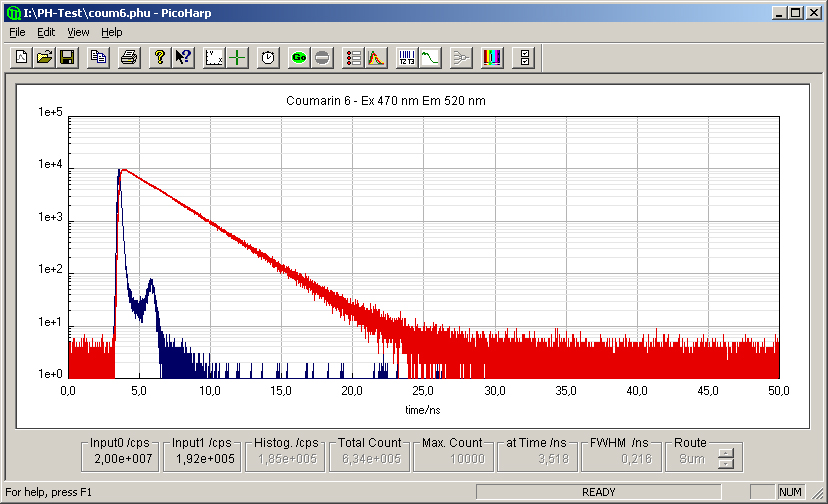December 20, 2013
New TCSPC system software for PicoHarp 300
A programmable time offset in the new version 3.0 replaces adjustable cable delays
 A new data acquisition software is now available for the PicoHarp 300 Time-Correlated Single Photon Counting (TCSPC) system from PicoQuant. The new version 3.0 provides a programmable time offset in the sync input to replace adjustable cable delays (4 ps resolution, ±100 ns) and a programmable time offset in all PHR 800 router channels to tune for relative delay (4 ps resolution, ±8 ns). It also provides a new future proof file format and export of histograms directly to ASCII files as well as various improvements in usage and user interface.
A new data acquisition software is now available for the PicoHarp 300 Time-Correlated Single Photon Counting (TCSPC) system from PicoQuant. The new version 3.0 provides a programmable time offset in the sync input to replace adjustable cable delays (4 ps resolution, ±100 ns) and a programmable time offset in all PHR 800 router channels to tune for relative delay (4 ps resolution, ±8 ns). It also provides a new future proof file format and export of histograms directly to ASCII files as well as various improvements in usage and user interface.
The PicoHarp 300 is based on an entirely new time digitizer with 4 picoseconds resolution, a very short dead time, a processing rate of up to 10 million counts per second, and an extremely low differential non-linearity. Compared to classical TCSPC systems it provides unique features, notably two identical input channels that can operate independently, but with a common crystal time base. Therefore, not only traditional TCSPC histograms for the measurement of fluorescence decays, but also picosecond coincidence correlations can be obtained. This is implemented using the instrument's Time-Tagged Time-Resolved (TTTR) mode, which records the picosecond arrival time of each individual photon.
For synchronization with other processes external marker signals can be recorded. This allows fluorescence lifetime imaging with virtually all existing imaging devices including laser scanning microscopes (LSMs). Dedicated upgrade kits for widespread microscope models are available. Fluorescence lifetime images can be recorded with these systems at virtually any resolution and size. The new version provides a programmable marker holdoff time to suppress glitches on the control signals. Fully software controlled Constant Fraction Discriminators (CFD) in all input channels ensure precise and optimized timing for a wide range of detectors. Optional accessories for signal conditioning, such as pre-amplifiers, attenuators and signal inverters allow the adaption to virtually all signal sources practically encountered in the lab. Sync/excitation sources can be as fast as 85 MHz but even very slow sources can be used efficiently with 'multi-stop' acquisition on the detector channel.
The software also provides warnings in situations where the measurement conditions are suboptimal or user settings are potentially erroneous, so that beginners are efficiently guided to avoid pitfalls. The PicoHarp 300 is designed as a USB 2.0 “Plug and Play device”, allowing control and data acquisition from a regular desktop computer or notebook PC. The USB interface is designed very efficiently, so that a sustained TTTR mode throughput of 5 millions of counts per second can be guaranteed for virtually any measurement time required. To owners of a PicoHarp 300 the new software is provided free of charge.
Downloads
Contact
General contact
Info request
info@picoquant.com
+49 (0)30 1208820-0
Press contact
Nicole Saritas
mkt@picoquant.com
+49 (0)30 1208820-0

